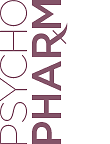Cannabis is the most widely used illicit drug in the United States. Social and policy trends, as reflected in national surveys and state legislation, demonstrate increasing acceptance and use of cannabis with decreasing perception of harm, which may lead to an increased occurrence of cannabis use disorder. As with other substance use disorders, cannabis use disorder commonly co-occurs with non-substance-related psychiatric disorders, putting all psychiatrists at the frontlines to identify and treat patients with this disorder.
There are no FDA-approved medications for the treatment of cannabis use disorder, and few individuals who receive behavioral interventions are able to achieve sustained abstinence (Gates et al., 2016). However, several clinical trials in adults provide evidence for the off-label use of medications in the treatment of the disorder.
The current strategies for the off-label treatment of cannabis use disorder target withdrawal symptoms, aim to initiate abstinence and prevent relapse or reduce use, and treat psychiatric comorbidity and symptoms that may contribute to cannabis use. Here, we focus on the evidence supporting these key strategies.
What Can You Prescribe to Reduce Cannabis Withdrawal, Craving?
Cannabis withdrawal is defined by DSM-5 as having three or more of the following symptoms that develop after the cessation of cannabis use has been heavy or prolonged:
•
Irritability, anger, or aggression
•
Decreased appetite or weight loss
•
At least one of the following physical symptoms that causes discomfort: abdominal pain, shakiness/tremors, sweating, fever, chills, or headache.
Craving marijuana is another withdrawal symptom that should be considered when assessing patients seeking treatment for cannabis use disorder.
Withdrawal symptoms can present within the first 24 hours following cessation of cannabis use and often peak within the first week. These symptoms can last for up to one month following last use. Reducing withdrawal symptoms may lead to better treatment outcomes.
Six double-blind, placebo-controlled pharmacotherapy trials in adults with cannabis use disorder have looked at withdrawal as an outcome (Sherman et al., 2016). Of these studies, only the THC agonist dronabinol (Levin et al., 2011), bupropion (Penetar et al., 2012), and gabapentin (Mason et al., 2012) reduced withdrawal symptoms; and nabiximols/Sativex (THC and cannabidiol nasal spray) increased engagement in treatment based on visit attendance (while actively on the medication) but did not reduce cannabis use at follow-up (Allsop et al., 2015).
Other human laboratory studies suggest dronabinol and nabilone may reduce craving (Bedi et al., 2013), and quetiapine (Cooper et al., 2013), zolpidem (Herrmann et al., 2016), and mirtazapine (Haney et al., 2010) may be used to reduce withdrawal-induced sleep disturbances.
Combining dronabinol and lofexidine (an alpha-2 agonist) was also found to be superior to placebo at reducing craving, withdrawal, and use during abstinence in a laboratory model in which cannabis was administered to those not seeking treatment. However, in a subsequent clinical treatment trial, the combined medication treatment was not superior to placebo in reducing cannabis use or promoting abstinence.
Trials Highlight Several Options for Reducing Relapse
Other clinical trials have evaluated medications that may promote abstinence from cannabis by reducing stress-induced relapse and craving, as well as the reinforcing aspects of cannabis.
In addition to decreasing symptoms of withdrawal, gabapentin has been found to reduce quantitative THC urine levels, a marker for overall cannabis use, and improve cognitive functioning in cannabis-dependent adults (Mason et al., 2012). Adults who took buspirone were more likely than those who received placebo to have urine drug screens negative for cannabis (though not a significant difference compared with placebo) (McRae et al., 2006). Adolescents who took N-acetylcysteine for eight weeks were more than twice as likely as those who took placebo to have negative urine cannabinoid test results during treatment (though there was no difference between the groups in self-report of cannabis use) (Gray et al., 2012). People who took topiramate had significant decreases in the grams of cannabis used (though no difference in percent days used or proportion of positive urine drug screens (Miranda et al., 2016).
Notably, there is evidence to suggest that nabilone and chronic naltrexone administration may reduce relapse (Haney et al., 2013) and cannabis self-administration and subjective effects (Haney et al., 2015), respectively, in adults, suggesting promising avenues yet to be explored by larger clinical trials.
As Psychiatric Symptoms Improve, Cannabis Use May Decline
Treating commonly occurring comorbid psychiatric disorders in adults with cannabis use disorder may also help patients to abstain from or reduce cannabis use. For example, if patients are less depressed, they may be able to better engage in cognitive-behavioral therapy (CBT) for relapse prevention. Similarly, treating symptoms of attention-deficit/hyperactivity disorder (ADHD) may help a patient to become less impulsive and better able to control his/her cannabis use.
A study of adolescents with depression and cannabis use disorder found that fluoxetine not only reduced symptoms of depression, but also led to decreased use of cannabis (Cornelius et al., 2010). In contrast, adults with depression and cannabis use disorder who took venlafaxine demonstrated less abstinence and experienced greater cannabis withdrawal-like symptoms compared with placebo, suggesting that this antidepressant might not be beneficial for treatment-seeking individuals with cannabis use disorder and may negatively impact outcomes (Kelly et al., 2014; Levin et al., 2013).
In conclusion, based on the currently available evidence, gabapentin, N-acetylcysteine (in adolescents), THC agonists, and naltrexone show the greatest promise for treating patients with cannabis use, and a combination of medication strategies may ultimately work best. Future research should evaluate these medications in larger randomized, controlled trials.
Until further research elucidates the standard of pharmacotherapy practices for cannabis use disorder, the best off-label medication strategy should target reduction in identified problematic symptoms related to cannabis use and cessation of use and treatment of co-occurring disorders. ■
REFERENCES:

